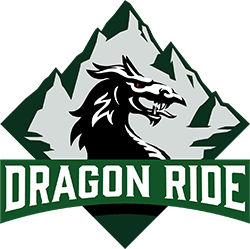7 ways to be an Endurance King
Whether you’re a runner, cyclist or swimmer, get fitter, faster and stronger with advice from pro triathlete Reece Barclay so take your performances to a higher level at the Royal Windsor Triathlon, where Optimum Nutrition are the Official Sports Nutrition Partner.
Reece Barclay is a professional triathlete and triathlon coach, and Optimum Nutrition ambassador.
- Take recovery seriously
I have been training almost every day since I was a kid, and it doesn’t take long to learn that failing to recover properly has a big impact on how well you can train and perform. So I’ve always taken recovery very seriously but I still see that many amateur endurance and cardio athletes don’t pay the same amount of care and attention to their recovery process in the way that amateur bodybuilders and weight lifters do. Many of these cardio guys would notice a big improvement in their race performances if they did start to pay more attention to recovery, especially around their nutrition.
- Don’t be scared of protein
There is still a tendency amongst endurance guys to think only about carbohydrate intake and rarely give much consideration to protein and fats. I will have some carbs and amino acids before and during every training session, and a protein shake as soon as my workout is over, but a lot of runners, especially after winter races, will have a cup of tea after training, and so not take on any protein! I know a lot of cyclists that take nutrition very seriously, but in my experience I have seen cyclists do a five-hour ride then finish and have a cup of coffee! It is getting better than it used to be, but if you’re a cardio athlete and you’re not taking on protein post-workout then you’re missing a big trick in speeding up your recovery time.
- Take on protein power
In my experience I think the main reason for avoiding protein, and protein shakes, is that many runners and cyclists are weight-conscious, and don’t want to put on any size so they can be as strong and lean as possible. Swimmers are much better when it comes to eating sensibly around training, because they need more lean muscle mass, especially on their upper bodies, so think more like bodybuilders about maximising protein intake than the runners and cyclists. Every swimmer I know has a backpack full of protein, food and other snacks.
- Fuel your sessions smarter
Recovery starts before your training session begins. For me that means taking water, amino acids and some caffeine, especially ahead of a tough session – Optimum Nutrition’s cola flavoured Essential Amino Energy is perfect and then once the workout is underway I will take on carbs and more amino acids. It’s impossible for me to take on as much energy as I am burning, but it’s crucial I take on as much as I can to keep my performance levels as high as I want them to be. As soon as my workout is done I will have an Optimum Nutrition Gold Standard 100% Whey protein shake, usually blended with a banana, then eat a full meal – my favourite is poached eggs and avocado on toast – an hour later.
- Prepare like a pro
Preparation is everything when it comes to performing at your best. There’s always three or four cool-boxes in my car, packed with healthy snacks and shakes, because I’ve been caught in traffic jams before without any food – never again! If you prep your food you’re going to make the smartest nutrition decisions possible, and ultimately that’s what’s going to get you moving closer to your health and fitness goal.
- Dial in your diet
If you’re training well and getting enough sleep but still not seeing the physique or performance improvements that you want, then in nine cases out of ten it’s your diet that’s the issue. You should improve after every training session, if you’re following a smart and progressive workout plan, but if you’re not taking a closer look at what you’re eating. Make sure your main meals are based around lean protein, veg and natural carbohydrates. If you’re an endurance athlete and you want to get fitter and faster than you need to take on board enough carbs. Without them you’re never going to have the energy you need to push harder when it comes to the crunch.
- You can’t post PBs daily
The most common mistake I see amateur endurance athletes make is treating every single training session the same – in that they want to make it the longest, toughest and hardest session they’ve ever done. That’s not a smart approach because after a week, or two at the most, you’re going to burn out, even if you are eating really well. The lighter and easier sessions are just as important as the all-out lung-busting sessions, and have a role to play in getting you to where you want to be. Have a great plan, trust in the process, push hard when its required and take your foot off the gas when needed. That’s the right way to do it. If you are struggling with your training plan then it is best to consult an experienced coach to get you on the right track.
Recovery is the Ultimate Preparation
If you are in training for an Endurance event why not try Optimum Nutrition’s introductory GOLD STANDARD RECOVERY PACK containing Gold Standard 100% Whey and Gold Standard BCAA Train + Sustain and a free shaker
